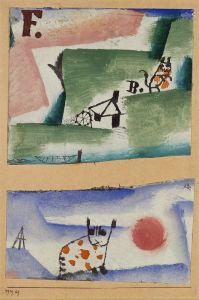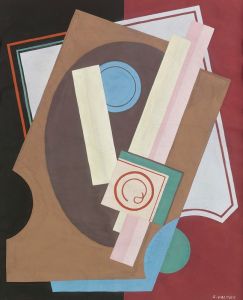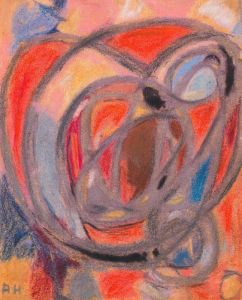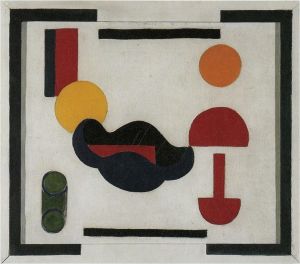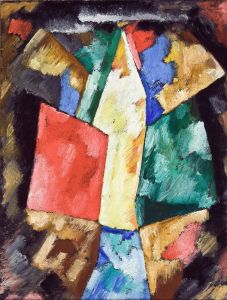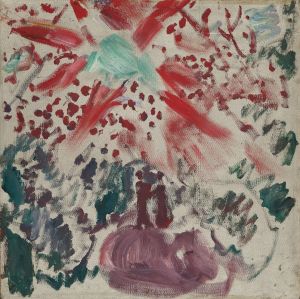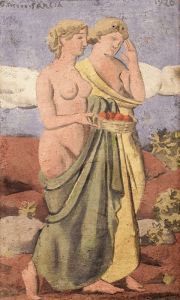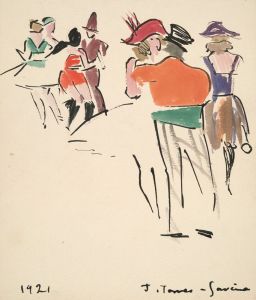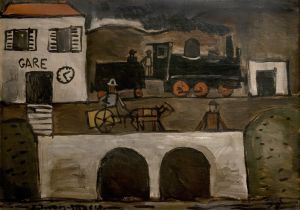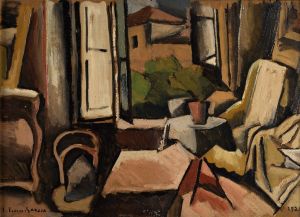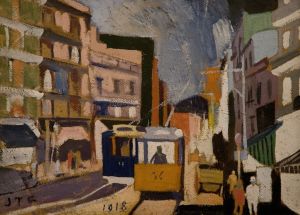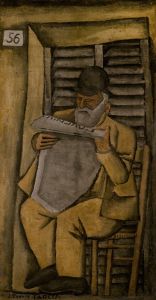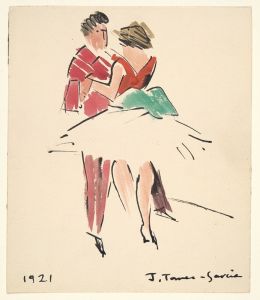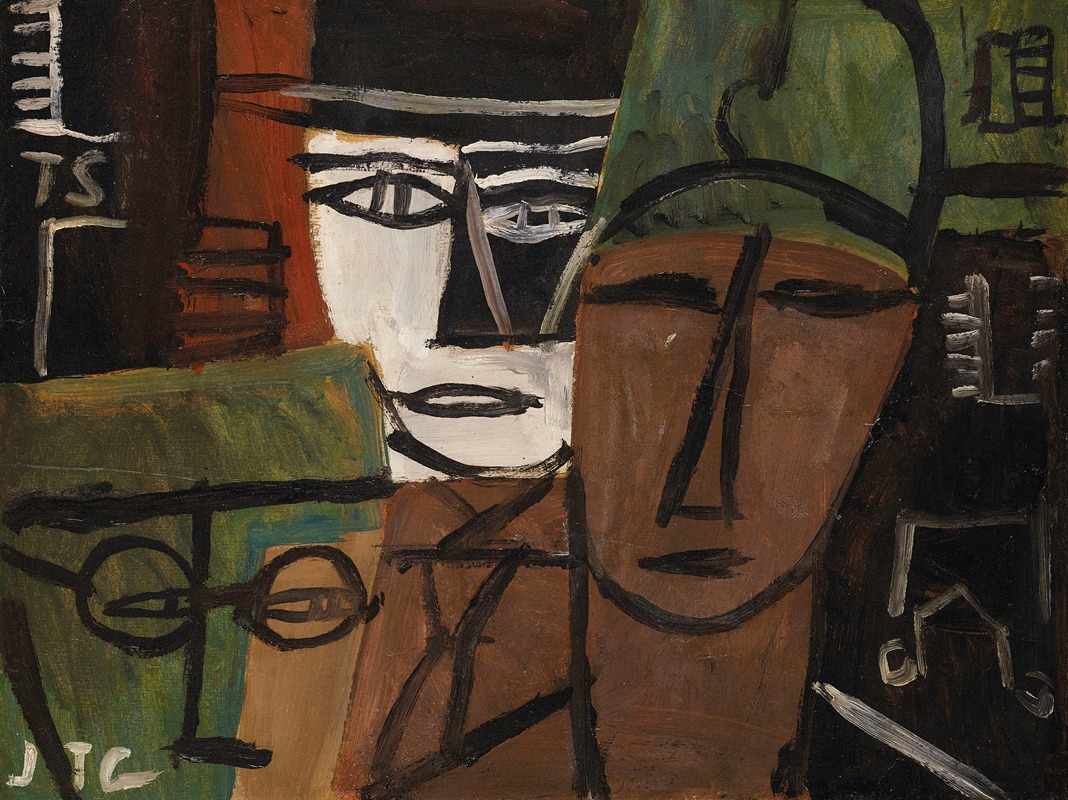
Têtes
A hand-painted replica of Joaquín Torres-García’s masterpiece Têtes, meticulously crafted by professional artists to capture the true essence of the original. Each piece is created with museum-quality canvas and rare mineral pigments, carefully painted by experienced artists with delicate brushstrokes and rich, layered colors to perfectly recreate the texture of the original artwork. Unlike machine-printed reproductions, this hand-painted version brings the painting to life, infused with the artist’s emotions and skill in every stroke. Whether for personal collection or home decoration, it instantly elevates the artistic atmosphere of any space.
Joaquín Torres-García was a prominent Uruguayan artist known for his contributions to modern art and his development of a unique visual language that combined elements of European avant-garde movements with Latin American cultural motifs. One of his notable works is "Têtes," which exemplifies his distinctive style and artistic philosophy.
"Têtes" is a painting that reflects Torres-García's interest in primitivism, abstraction, and the synthesis of different cultural influences. Created during a period when the artist was deeply engaged with the avant-garde movements in Europe, the work showcases his commitment to creating a universal visual language. This painting is part of his broader effort to bridge the gap between the old and the new, the local and the global, by integrating symbols and forms that resonate across different cultures.
The painting features a series of stylized heads, or "têtes," depicted in a manner that emphasizes geometric forms and a grid-like structure. This approach is characteristic of Torres-García's Constructive Universalism, a theory he developed that sought to harmonize the spiritual and the material through art. By using a grid, he imposed order and structure, reflecting his belief in the underlying harmony of the universe. The heads are rendered with simplified lines and shapes, suggesting a connection to both ancient art forms and modern abstraction.
Torres-García's use of a muted color palette in "Têtes" further underscores the timeless quality of the work. The earthy tones and restrained use of color highlight the forms and symbols, allowing the viewer to focus on the composition and the relationships between the elements. This restrained palette is a hallmark of his work, emphasizing the universality and transcendence of the symbols he employed.
The influence of Torres-García's time in Europe is evident in "Têtes." He spent several years in Paris, where he interacted with leading artists of the time, including Piet Mondrian and Theo van Doesburg. These interactions influenced his adoption of geometric abstraction and his interest in creating a universal artistic language. However, unlike some of his contemporaries who pursued pure abstraction, Torres-García maintained a connection to figuration and symbolism, which is evident in the depiction of heads in this painting.
"Têtes" also reflects Torres-García's engagement with pre-Columbian art and his desire to incorporate elements of Latin American identity into his work. The stylized forms and symbolic content can be seen as a dialogue between European modernism and indigenous American art, a synthesis that was central to his artistic vision. This blending of influences is a testament to his belief in the interconnectedness of cultures and the potential for art to transcend geographical and temporal boundaries.
Throughout his career, Joaquín Torres-García remained committed to his vision of Constructive Universalism, and "Têtes" is a significant example of this philosophy. The painting not only represents his artistic ideals but also serves as a bridge between different artistic traditions, reflecting his role as a pioneer in the development of modern art in Latin America. Today, Torres-García is celebrated for his contributions to the global art movement, and works like "Têtes" continue to be studied and appreciated for their innovative approach and cultural significance.





